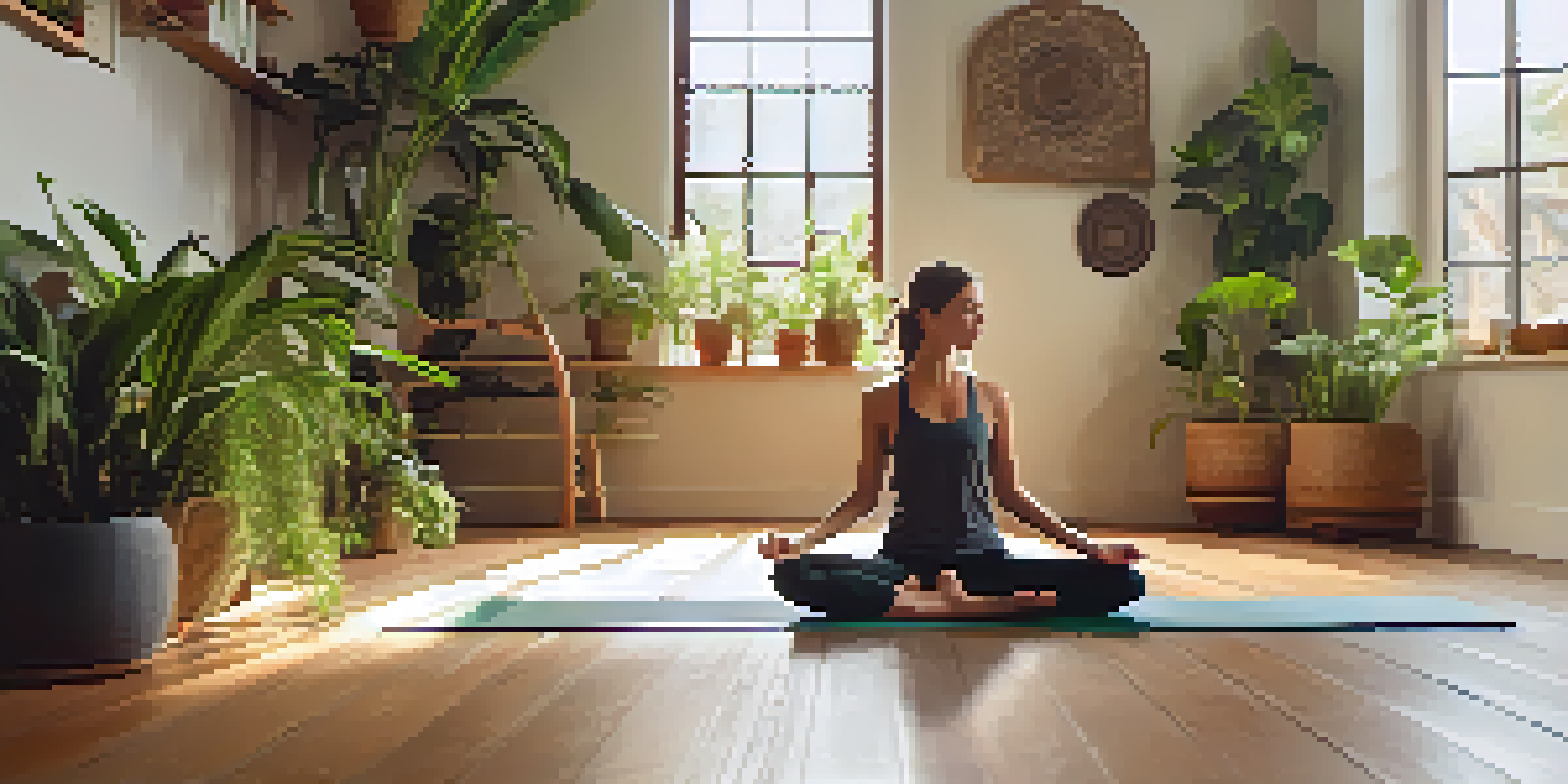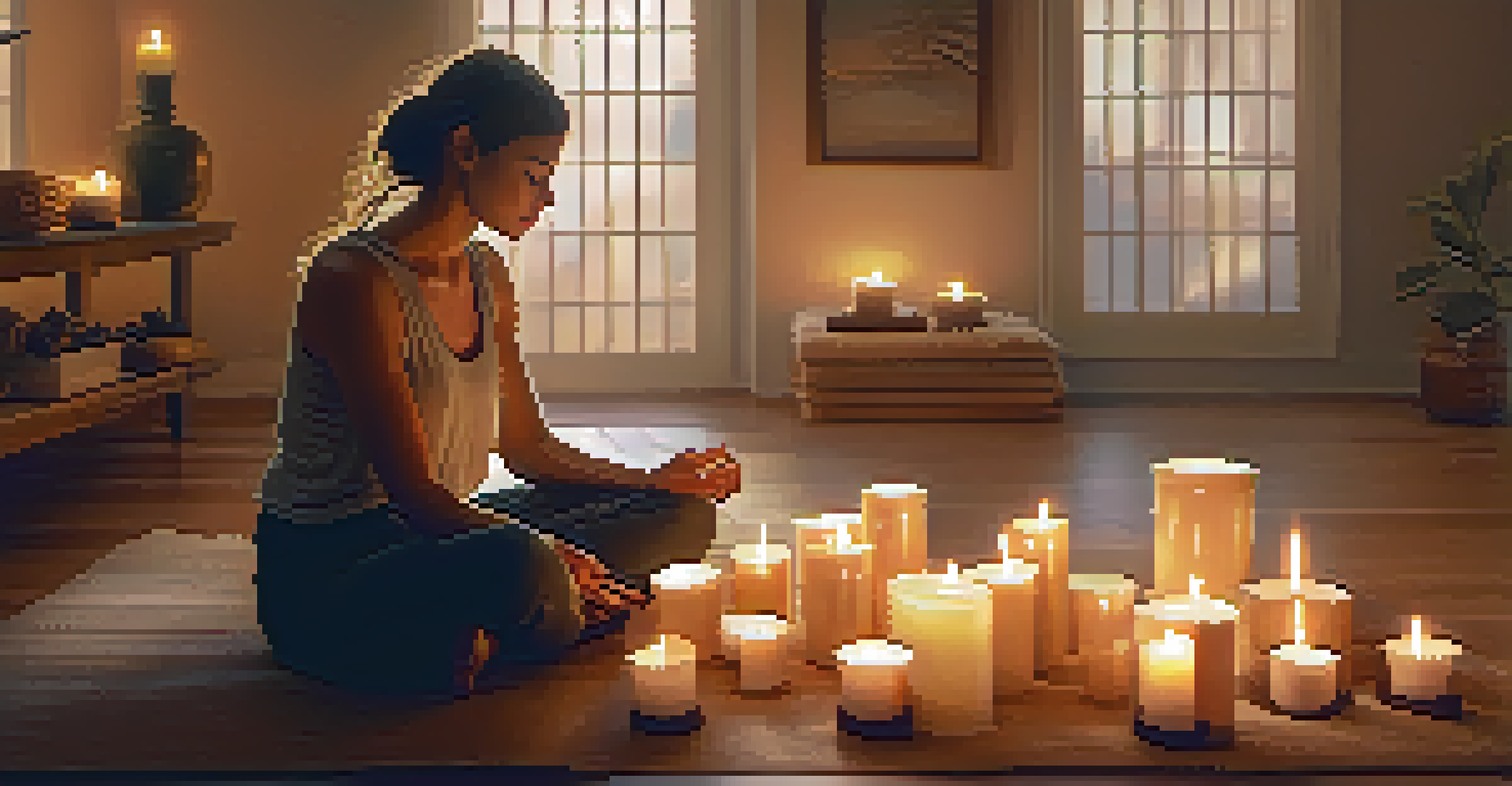Yoga for Seasonal Affective Disorder: A Beginner's Guide

Understanding Seasonal Affective Disorder (SAD)
Seasonal Affective Disorder, commonly known as SAD, is a type of depression that occurs at certain times of the year, usually in winter. It's thought to be linked to changes in light exposure, which can disrupt your body's internal clock and lead to feelings of sadness or lethargy. People with SAD may experience symptoms like fatigue, changes in sleep patterns, and difficulty concentrating.
The mind and body are not separate. What affects one, affects the other.
Recognizing SAD is crucial for managing its effects. If you find yourself feeling low during the darker months, you’re not alone. Many individuals experience these feelings, and understanding that they stem from seasonal changes can be the first step towards feeling better.
Yoga can be an effective tool for managing SAD symptoms, promoting both physical and mental well-being. By incorporating movement, breath, and mindfulness into your routine, you can help lift your mood and combat the winter blues.
The Benefits of Yoga for Mental Health
Yoga is not just about physical postures; it also promotes mental clarity and emotional balance. Studies have shown that regular yoga practice can reduce anxiety and depression, making it a powerful ally for those battling SAD. Through mindful breathing and meditation, yoga encourages a state of relaxation and peace.

When you engage in yoga, your body releases endorphins, which are natural mood lifters. This biochemical response helps to counteract feelings of sadness and promotes a sense of well-being. Plus, the focus on mindful movement allows you to connect with your body, fostering a deeper understanding of your emotions.
Understanding Seasonal Affective Disorder
SAD is a type of depression triggered by seasonal changes, particularly in winter, due to reduced light exposure.
In essence, yoga creates a safe space for self-reflection and emotional release. It helps you to acknowledge and accept your feelings, rather than pushing them away, which can be particularly beneficial during challenging seasons.
Basic Yoga Poses to Combat SAD
Starting with simple yoga poses can lay a solid foundation for your practice. Poses like Child’s Pose, Cat-Cow, and Warrior I are great for beginners and can help release tension while boosting energy. Each of these poses encourages movement and breath, which are vital for lifting your mood.
Yoga is the journey of the self, through the self, to the self.
For example, Child’s Pose is a gentle way to find calm and introspection. It can help you connect with your breath and center your thoughts. Similarly, Warrior I is empowering, as it opens the heart and increases confidence, helping to counter feelings of lethargy.
Incorporating these poses into your daily routine, even for just a few minutes, can make a significant difference in how you feel. Remember, consistency is key—small, regular practices can have a profound impact over time.
Breathwork: A Powerful Tool in Yoga
Breathwork, or pranayama, is an essential component of yoga that focuses on controlling your breath. This practice can significantly enhance your mental clarity and emotional stability. Techniques such as deep breathing or alternate nostril breathing can help reduce stress and anxiety, which are often heightened during winter months.
Focusing on your breath allows you to anchor your thoughts and bring awareness to the present moment. This practice can also help increase oxygen flow in your body, promoting relaxation and energy at the same time. It's a simple yet effective way to combat the fog of SAD.
Yoga's Benefits for Mental Health
Regular yoga practice enhances mental clarity and emotional balance, making it an effective tool for combating SAD symptoms.
Incorporating breathwork into your daily routine can be as easy as spending a few minutes each day focusing on your inhalations and exhalations. You’ll be amazed at how this small adjustment can shift your mood and outlook.
Creating a Consistent Yoga Routine
Establishing a regular yoga routine can be a game changer for managing SAD. Consistency helps to build momentum, making it easier for you to maintain your practice even on difficult days. Start with short sessions, gradually increasing the duration as you become more comfortable.
Find a time that works best for you, whether it's in the morning to energize your day or in the evening to unwind. Setting aside dedicated time for yoga helps to make it a priority in your life, reinforcing its importance in your mental health journey.
Consider joining a local class or following online videos to stay motivated. The sense of community in a class can provide additional support, making your practice more enjoyable and effective.
Mindfulness and Meditation Practices
Mindfulness and meditation are integral to yoga and can play a crucial role in alleviating symptoms of SAD. These practices encourage you to stay present, which can help reduce ruminating thoughts and anxiety. Just a few minutes of meditation each day can create a significant positive shift in your mindset.
By focusing on your breath and letting go of external distractions, you cultivate a sense of inner peace. This practice can help to foster a deeper connection with your feelings, allowing you to process emotions rather than suppress them.
Seek Professional Help When Needed
While yoga can help with SAD, it's important to consult a mental health professional for tailored support if symptoms persist.
Incorporating mindfulness techniques, such as guided imagery or body scans, can enhance your yoga practice. These methods encourage awareness of your body and feelings, which is especially beneficial during the darker months.
Seeking Professional Help When Needed
While yoga can be a powerful tool for managing SAD, it’s essential to remember that it’s not a substitute for professional help. If you find that your symptoms are overwhelming or persistent, seeking guidance from a mental health professional is crucial. They can provide tailored strategies and support to help you navigate your feelings.
Combining yoga with therapy or counseling can create a comprehensive approach to managing your mental health. Therapists often recommend complementary practices like yoga to enhance treatment outcomes, providing an additional layer of support.

Ultimately, it’s important to prioritize your mental health and well-being. Embracing yoga can be a wonderful part of your journey, but don’t hesitate to reach out for help when you need it.